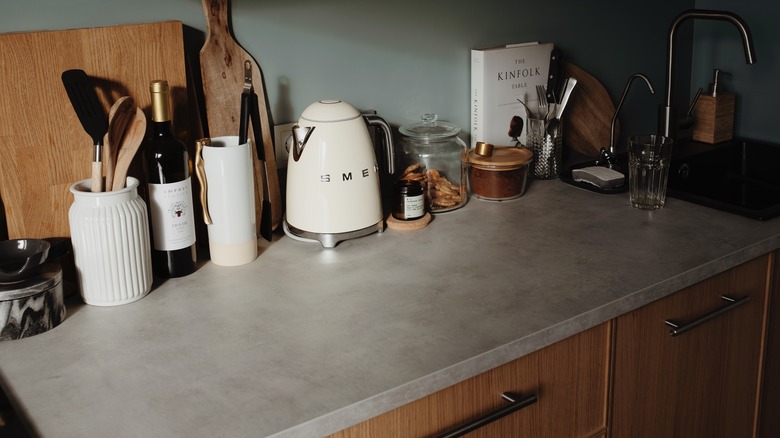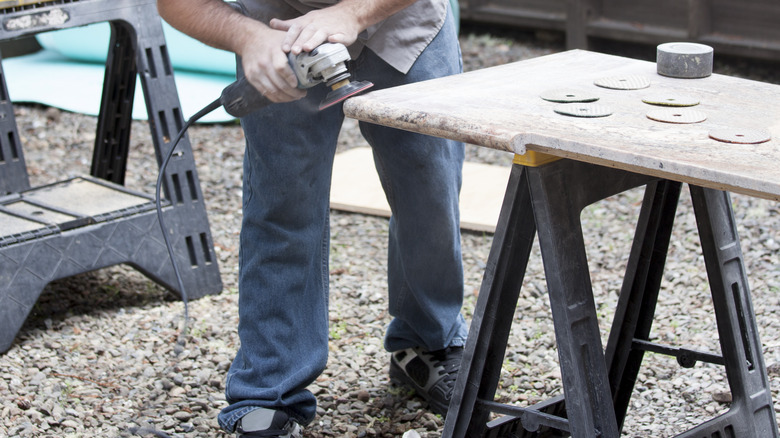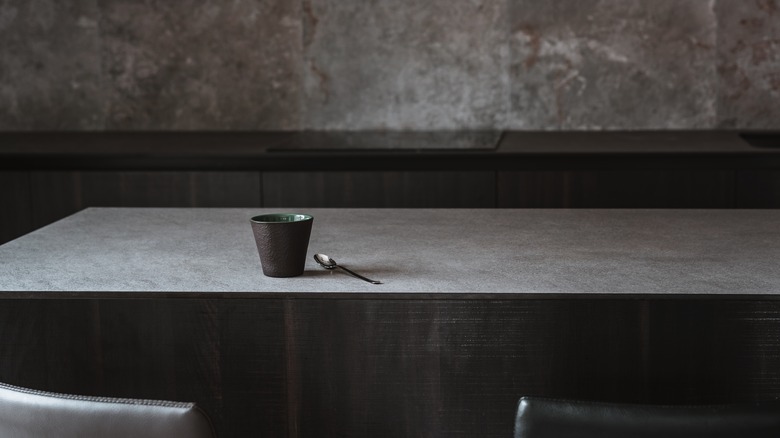How To Update Old Granite Countertops Without Paint, According To Experts
Granite countertops have long been admired for their timeless beauty and durability, making them a popular choice in kitchens and bathrooms. However, these once-pristine surfaces can show signs of wear and tear, losing their luster and smoothness over time. The thought of updating them might immediately bring to mind the idea of paint, but there is a less invasive and more effective option recommended by @housebeautiful on TikTok: Honing. Unlike polishing, which focuses on achieving a high-gloss finish, honing involves gently grinding the surface of the granite to remove imperfections, scratches, and etches, resulting in a smooth, matte finish. It can rejuvenate the countertop's appearance, enhance its natural beauty, and create a more uniform and consistent look.
Honing not only removes minor surface blemishes but also provides a new lease of life to granite that may have become dull or faded over time. Additionally, honing is a more cost-effective alternative to replacing the entire countertop, making it a popular choice among homeowners looking to refresh their space on a budget.
How granite is honed
The process of honing typically involves using abrasive pads to grind away imperfections and create a smooth, low-gloss texture. The goal is to achieve a consistent and even appearance across the entire countertop. Throughout the procedure, it is important to regularly vacuum the surface to remove debris and assess the progress. This allows for adjustments to be made as needed to ensure the desired result is achieved. After honing, it is recommended to thoroughly clean and dry the countertops to remove any remaining residue. A food-safe granite sealer is recommended to protect the surface from staining and ensure long-term durability.
Some homeowners prefer to hire a professional to make this update, while others opt for the DIY route. If you are in the latter group, taking proper safety measures is crucial. Honing granite countertops generates dust and debris, which can pose respiratory hazards if inhaled. It is advisable to wear protective gear such as goggles, gloves, and a mask to minimize health risks during the honing process.
Pros and cons of honed granite
By weighing the pros and cons, you can determine if honed granite countertops align with your aesthetic preferences and maintenance requirements. On the positive side, honed granite provides a matte and natural appearance, adding a warm and inviting feel to your kitchen or bathroom. It also conceals imperfections, making it an ideal choice for those who want to minimize the visibility of scratches and flaws. Additionally, honed granite offers better grip and traction, making it safer, particularly in areas prone to spills.
There are also a few downsides to consider. Honed granite is more susceptible to stains since it is more porous than polished granite, making regular sealing and prompt cleaning essential. It is also more susceptible to etching from acidic substances, necessitating caution and quick clean-up of spills. And since it is softer after the process, it scratches more easily. However, minor marks may not be as evident since the finish is not glossy.


